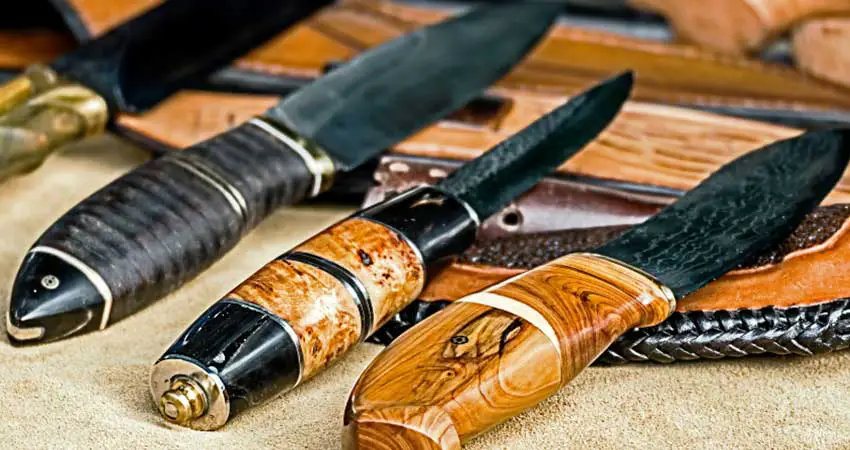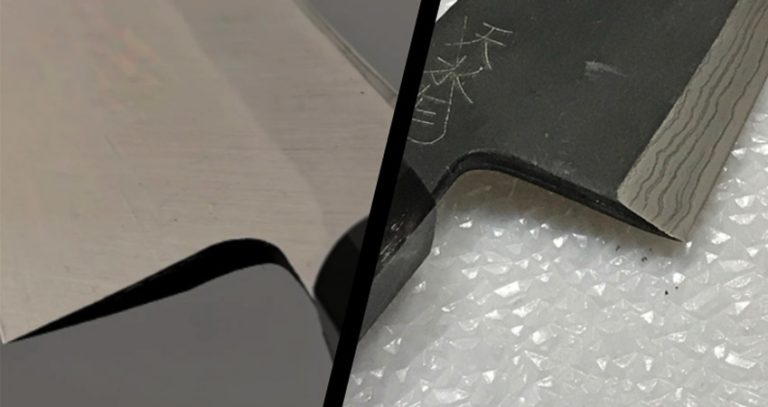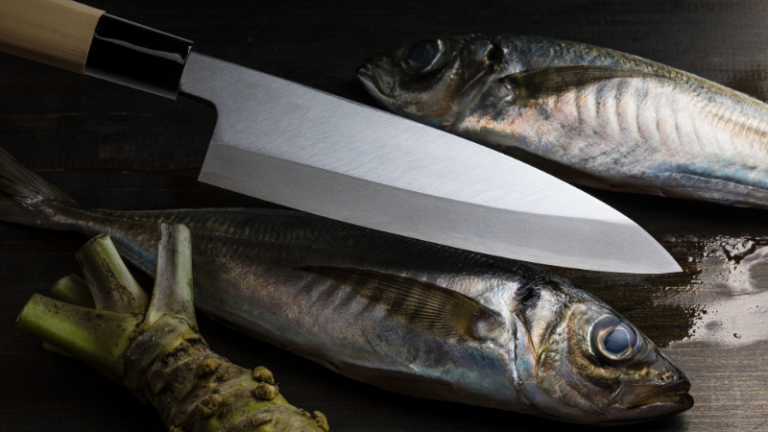How to Make Knife Handles?
In our everyday activities, we interact with knives for various purposes. Be it in the kitchen or the fields. Using a knife with a broken or wrongly fitted handle will injure your hand.
Well-fitted knife handles offer comfort to the user and make it easier to cut with them.
If you have a broken knife handle and need a new one, this article will guide you on how to make knife handles on your own.
How To Make Knife handles
Knife handles come in different materials but share a similar process. It will be easy to make a knife handle with the equipment listed below.
Things you need:
- Full-tang knife blade
- Pins
- Clump
- Gorial Glue
- Sandpaper
- Pieces of wood(Preferred material)
- Tape
- Marker pen
It is easy to make a knife handle using wood with an already made full-tang knife blade and pins following the below-listed steps.
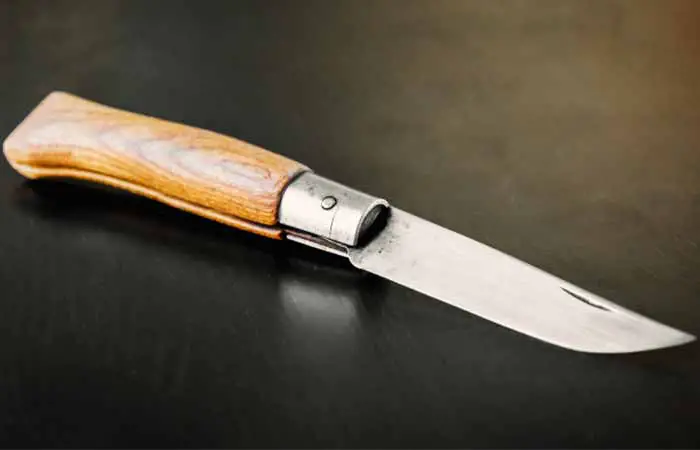
Step 1: Covering The Blade’s Cutting Edge
Wrap at least five layers of the tape around the cutting edge to reduce the risk of the knife cutting you or the glue from staining the blade.
The wrapping should be thick enough to avoid the blade from cutting through by wrapping more tape.
Step 2: Get a Suitable Handle
In this case, get a pair of wood (preferably hardwood) such as apple or pearwood. The pair of wood is known as scales.
Make the wood longer than the tang and ensure that the grain runs along the length of the wood.
Step 3: Line The Vise with Plywood
The plywood protects the wooden scales from scratches or dents from the vices.
Step 4: Hold The Scales and Tang Together
Tape the pair of scales together with the sides on the outside of the handle facing out. Place the tang on the jointed scales and wrap them together with masking tape.
Take care not to cover the holes in the tang.
Step 5: Use a Drill Press to Make The First Hole Using The Tang’s Holes as a Guide
Hold the tang and scales together, drill holes into the scales guided by the ones on the tang.
Step 6: Insert a Pin into The Hole, then Drill The Remaining Holes
Insert the first pin to ensure steadiness when drilling the other holes. Repeat steps 5 and 6 for the number of holes therein.
Step 7: Remove The Tape and Trace The Tang on The Scales
While leaving the pins in position, remove the tape and trace the tang onto the scales using a marker pen.
It is advisable to use a well visible color.
Step 8: Remove The Tang and Cut The Scales
Remove the tang and cut the scales outside the marks using a sharp band saw. Cutting outside the marks gives room for the polishing and sanding of the scales.
Keep the pins in place to avoid movement of the scales and ensure that the scales are cut both simultaneously.
Step 9: Polish The Ends of The Scales
Polishing helps give a fine and smooth end to avoid damaging endings.
Step 10: Clean and Glue The Tang and The Inner Side of The Scales
Clean the tang using a cloth to remove dirt while applying glue for maximum efficiency.
Step 11: Fix The Scales with The Tang in Between and Fix The Pins Back
Fix the pieces together with care to avoid staining the blade with glue. The knife handle is now ready to be clamped firmly to set
Step 12: Insert The Handle into a Vise and Clump
The vise is lined with plywood; clump the handle tight enough for the pieces to set.
Step 13: Remove The Handle, Polish The Scales, and Grind off Excess Pins
Having polished the excess parts, you can now remove the tape wrapped around the cutting edge. The knife is now ready to use.
Materials That A Knife Handle Can Be Made Of
Below are the various materials for making knife handles, advantages, and disadvantages.
1. Stainless Steel
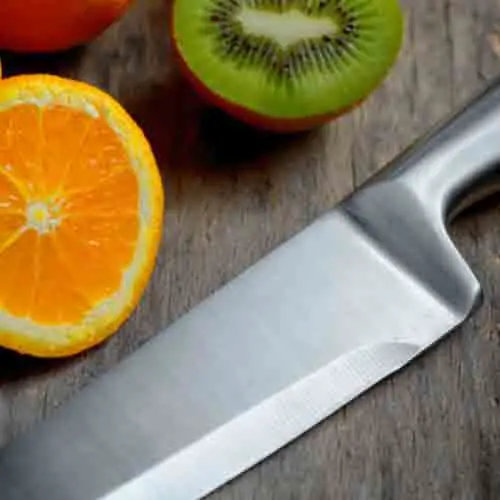
Stainless steel is an alloy of copper and iron, making it cheaper than other alloys. Stainless steel is commonly used for both the handles and the blades due to its strength.
Advantages
- Strong and very durable
- Resistant to agents of corrosion
- Do not dent or scratch easily
Disadvantages
- Cumbersome
- Slippery when wet
2. Aluminum

Aluminum is largely applied in household items due to its lightweight and strong feature. Unlike steel, it is also non-ferrous, which means it is resistant to corrosion.
Advantages
- Lightweight
- Cheap
- Strong and durable
- Non-ferrous
Disadvantages
- Prone to dents and scratches
- Slippery when wet
3. Titanium
Titanium is non-ferrous. The metal is more durable and stronger compared to other metals. Due to this, titanium is used as a coating for knife blades.
Advantages
- Lightweight
- Strong and durable
- Non-ferrous
Disadvantages
- Expensive
- Prone to scratching
4. Wood
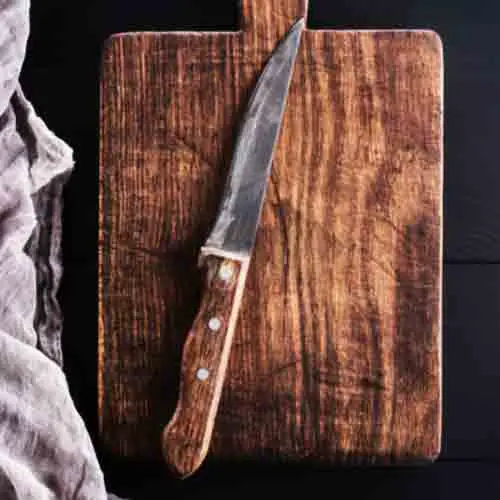
Wood has been the most preferred natural material for knife handles(the hardwood and the softwood).
The wood is stabilized with resins to make it more durable and waterproof for better results.
Advantages
- Attractive look
- Strong and durable
- Cheap
Disadvantages
- Can be broken
- Requires frequent maintenance
5. Leather
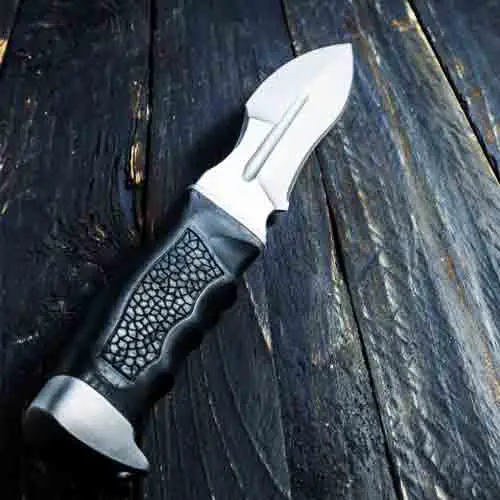
Though the leather handles are slowly becoming rare, they still produce a comfortable and attractive appearance. The leather is wrapped around the tang when fresh and then allowed to dry in position.
Advantages
- It’s cheap
- Attractive appearance
- Lightweight and comfortable
Disadvantages
- Less durable
- Requires high maintenance
6. Synthetics
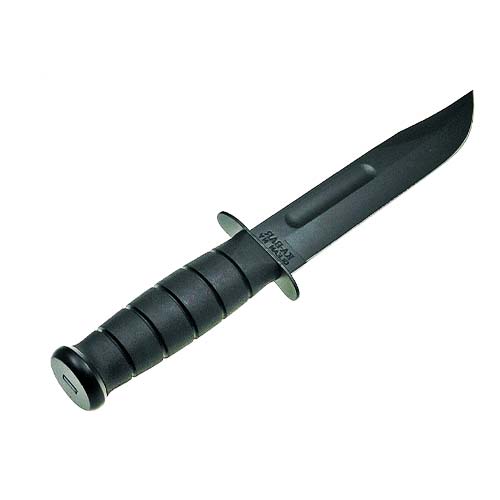
A. Kraton
Kraton is an artificial rubber known as a thermoplastic elastomer or thermoplastic rubber. Compared to natural rubber, it has higher heat resistance.
Advantages
- Comfortable grip
- Relatively durable
Disadvantages
- It’s soggy and can soak up water
- Its quality decreases with time
B. Micarta

Micarta comes in several types: canvas, paper, or linen. Micarta is made in a process that involves soaking pieces of line and paper and pressing them together.
Advantages
- Strong and durable
- Water-resistant
- Lightweight and tough
Disadvantages
- Quite expensive
- Can break under high pressure
Despite selecting the best and most attractive material, it is prudent to focus on the design of the handle to achieve the desired grip and comfort.
Final Verdict
See, you can make a knife handle on your own by hiring a professional. You don’t need any special skills or prior experience to make a good knife handle.
All you got to do is follow the step-by-step guideline we have outlined in this article, and you will have a smooth experience making a knife handle.

